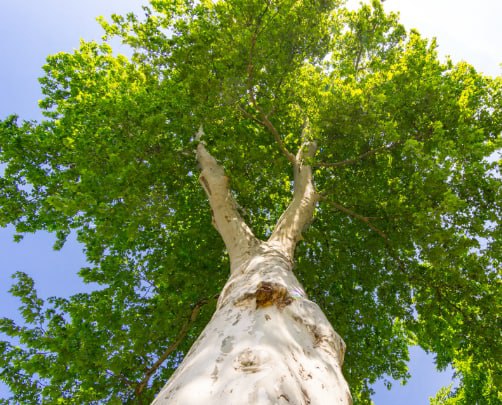Introduction
Trees are a vital part of our landscapes here in Ramsgate and across Kent, offering beauty, shade, and even habitat for local wildlife. But as much as they enhance our environment, they do sometimes require careful management to remain safe and healthy. One of the most effective—and misunderstood—methods of tree care is crown reduction.
At Ramsgate Tree Surgeons, we’re often asked when crown reduction is the right move. It’s not a catch-all solution, but when done professionally, it can extend a tree’s life, reduce risks, and improve the look of your outdoor space. In this article, we’ll explore five situations where crown reduction is not just appropriate—it’s the smartest strategy for long-term tree health and safety.
Key Takeaways
- Crown reduction reduces the overall size of a tree, making it safer and more manageable.
- It can prevent property damage, especially during storms or high winds.
- Improves light penetration and air flow, benefiting both trees and surrounding plants.
- Supports a tree’s structural integrity, especially if growth is uneven or weak.
- Ideal for preserving mature trees that might otherwise need full removal.
1. When a Tree Becomes a Safety Risk
Overgrown Branches Near Structures or Roads
One of the most common reasons for crown reduction is safety. If a tree’s upper canopy is expanding toward your home, power lines, or a busy road, that’s a potential hazard waiting to happen. In high winds or heavy rain, long limbs can break and cause serious damage or injury.
By selectively reducing the crown, we lessen the weight and spread of the tree while retaining its natural shape. This reduces the chance of falling branches and keeps your surroundings safe—without needing to remove the tree entirely.
High Wind Areas in Ramsgate
Ramsgate’s coastal location means exposure to strong sea winds. Trees with dense crowns can act like sails, catching the wind and becoming unstable. A professionally executed crown reduction reduces this wind resistance, helping the tree stand firm during storms.
2. To Maintain a Tree’s Structural Balance
Irregular Growth or Leaning Trees
Sometimes trees grow unevenly, especially if they’re leaning toward light or being crowded by other plants. This imbalance puts strain on certain limbs and can lead to future breakage or instability.
Crown reduction can correct this by rebalancing the tree’s shape, redistributing its weight and encouraging healthy growth. It’s particularly helpful for older trees, which may have developed structural weaknesses over time.
Supporting Long-Term Stability
Rather than performing constant reactive work like limb removal, a well-planned crown reduction acts as a long-term strategy—setting the tree up for years of safer, balanced growth.
3. When a Tree Blocks Too Much Light
Restoring Light to Gardens and Homes
Large trees can sometimes dominate an outdoor space, casting heavy shade that stifles other plants and leaves your garden feeling gloomy. If a tree is healthy but simply too large, a crown reduction can help restore sunlight to your property.
By carefully reducing the height and spread of the canopy, we allow more natural light to reach the ground—and nearby windows—without compromising the tree’s health.
Encouraging Underplanting and Lawn Growth
A less dense canopy also improves airflow and water distribution, which benefits lawns, flower beds, and shrubs struggling to thrive beneath a heavy shade.
4. To Preserve a Mature or Historic Tree
Avoiding Full Tree Removal
In some cases, a tree may be too large for its space or starting to show signs of age, but removal would be an unnecessary loss. Crown reduction offers a middle-ground solution—keeping the tree alive and integrated into your landscape, while making it more manageable.
This is especially relevant in heritage settings, such as Ramsgate’s historic properties, where tree preservation adds value and character.
Prolonging Lifespan
Reducing stress on a mature tree by trimming its upper canopy can extend its natural life. Less strain means fewer cracks, breaks, or disease entry points. When done properly, crown reduction promotes regeneration and vitality.
5. To Improve Tree Appearance and Shape
Enhancing Aesthetic Value
Not all crown reductions are about practicality—some are about appearance. Over time, trees can become misshapen due to storm damage, poor pruning, or uneven growth. A skilled arborist can reshape the crown, bringing back symmetry and improving the tree’s visual appeal.
Whether it’s a feature tree in your front garden or part of a larger landscape design, this kind of targeted pruning brings both order and beauty to your outdoor space.
Boosting Property Appeal
Well-maintained trees enhance kerb appeal and property value. A neat, healthy-looking tree gives the impression of a well cared-for garden or commercial landscape—especially important if you’re planning to sell or lease your property.
Conclusion
Crown reduction isn’t just another pruning service—it’s a strategic tool that, when used correctly, can solve practical problems and enhance your outdoor space. From reducing risk and preserving mature trees, to improving aesthetics and letting in more light, it offers a smart, sustainable way to care for your trees.
At Ramsgate Tree Surgeons, we bring expert knowledge and years of experience to every job. If your tree is overgrown, leaning, blocking light, or just not looking its best, crown reduction might be exactly what it needs. Contact us today to book a site visit and discuss the right care strategy for your trees.
Call us on: 01843 264695
Click here to find out more about Ramsgate Tree Surgeons
Click here to complete our contact form and see how we can help with your tree needs.
